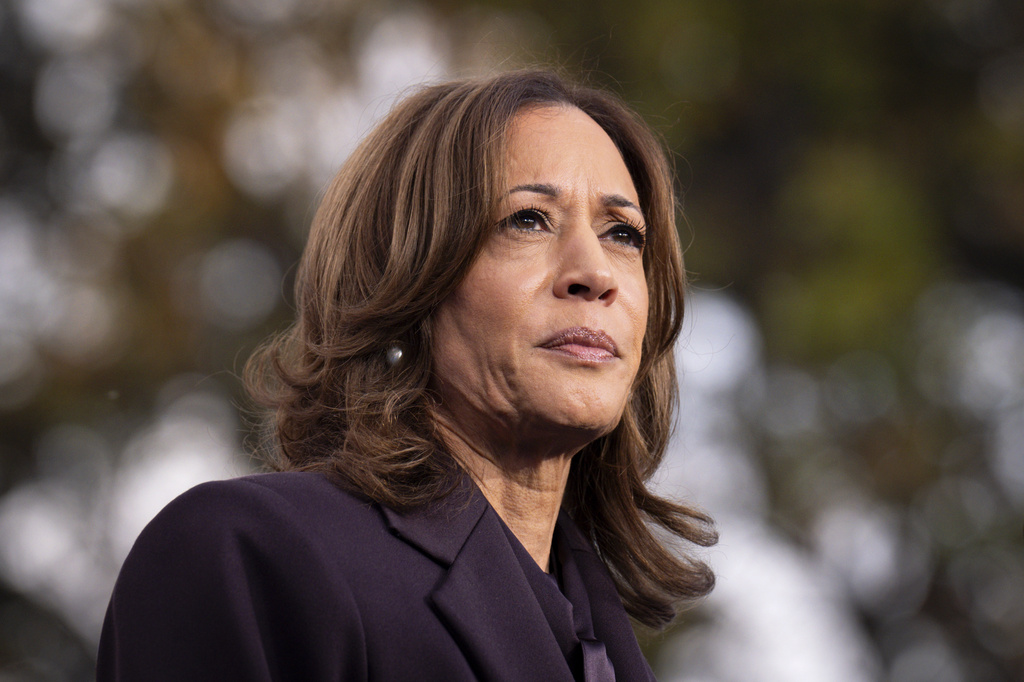Trump Surges in 2024 Election: A Breakdown of His Wins \ Newslooks \ Washington DC \ Mary Sidiqi \ Evening Edition \ Donald Trump’s 2024 presidential victory demonstrated a dramatic expansion of his support base, building on his 2020 totals in every state and Washington, D.C. He secured a majority of the popular vote for the first time in two decades for a Republican candidate and dominated in critical swing states. Kamala Harris, facing lower turnout and a loss of momentum in key Democratic areas, fell significantly short of Biden’s 2020 totals. Now, Democrats must reassess their strategy as midterm and gubernatorial elections loom.

Trump’s 2024 Election Success: Quick Looks
- Nationwide Growth: Trump increased his share of votes in all 50 states and D.C., outperforming 2020 results.
- Swing State Dominance: Secured all seven key battleground states with higher margins than in 2020.
- Urban Gains: Expanded support in urban Democratic strongholds like Detroit, Milwaukee, and Philadelphia.
- Voter Shifts: Gained significant ground with Black and Latino men under 45 and working-class voters.
- Economic Messaging: Trump capitalized on voter concerns about the economy and immigration, outshining Harris’ messaging.
Deep Look
Nationwide Gains Signal Broader Appeal
Trump’s campaign strategy was bolstered by his ability to outperform his 2020 numbers in all 50 states and Washington, D.C. According to an Associated Press analysis, he gained more votes in 40 states, even in traditionally Democratic areas. This growth reflected not just enthusiasm among his base but also his success in persuading a wider swath of voters, including younger men from minority groups and working-class communities.
While national turnout in 2024 was lower than the high-energy 2020 election, Trump still managed to secure 2.5 million more votes than he had four years earlier. Kamala Harris, on the other hand, faced a steeper uphill battle. She fell over 7 million votes short of Joe Biden’s total from 2020, particularly struggling to energize voters in urban strongholds that are critical for Democratic victories.
Swing State Dominance and Urban Gains
- Detroit (Wayne County): Trump added over 24,000 votes compared to 2020, while Harris underperformed Biden’s 2020 numbers by 50,000 votes, representing a 5% decline.
- Philadelphia (Philadelphia County): Trump increased his support by over 11,000 votes, while Harris lagged 36,000 votes behind Biden’s total.
- Milwaukee (Milwaukee County): Trump gained nearly 4,000 votes while Harris fell slightly short of Biden’s performance.
Although these urban areas did not singlehandedly decide the election, the shifts in voter behavior were critical in states like Michigan, Pennsylvania, and Wisconsin, where margins are often razor-thin.
Targeted Outreach to Minority and Working-Class Voters
AP VoteCast, a survey of over 120,000 voters, highlighted Trump’s improved performance among Black and Latino men under 45. His economic messaging, emphasizing issues like job growth and inflation, resonated strongly with these voters, particularly in blue-collar regions.
Challenges for Kamala Harris
Despite her historic candidacy, Harris struggled to mobilize voters at the same scale as Biden in 2020. In key swing states where she campaigned heavily, her totals fell short of Biden’s performance:
- Arizona: Harris received 90,000 fewer votes than Biden, while Trump’s support surged by over 56,000 votes.
- Michigan: She fell 67,000 votes behind Biden, while Trump improved his totals.
- Pennsylvania: Harris lagged by 39,000 votes compared to Biden’s numbers, even as Trump’s support climbed.
Arizona: A Unique Case Study
Arizona presented a particularly stark example of Trump’s 2024 resurgence. The state saw minimal overall turnout growth—just 4,000 additional votes compared to 2020—but Trump managed to flip it by improving his margins in every county. In Maricopa County, home to Phoenix and nearly 60% of Arizona’s population, Trump added 56,000 votes to his 2020 total, while Harris fell short of Biden’s mark by more than 60,000 votes.
Broader Rightward Shifts in Democratic Areas
AP VoteCast revealed that the economy and immigration were the top two issues for voters in 2024. Trump’s ability to connect with voters on these topics, particularly through straightforward messaging, gave him a decisive edge.
Democratic Strategists Reflect
“Democrats must focus on economic issues in terms people understand,” said Morgan Jackson, a North Carolina Democratic strategist. “Voters need clarity, not policy lectures.”
Conclusion: A Republican Resurgence
Trump’s 2024 victory signals a realignment in U.S. politics. By growing his base and making inroads into traditionally Democratic areas, he has set a challenging precedent for the opposition. For Democrats, the path forward lies in addressing turnout gaps and connecting with voters on pressing economic issues.
Trump Surges Trump Surges







